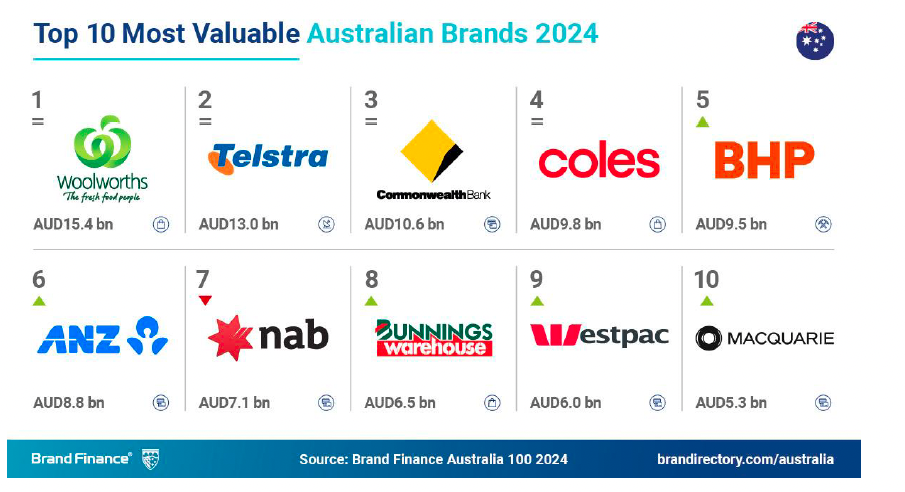Tassal combines CMO-sales remit, embeds emotion into ads, doubles ROI, boosts marketing’s business contribution 70% – lands 25% budget increase

What you need to know:
- Brand investment, boldly emotive campaign plays and a lot of data and testing from creative to media mix has are the foundational tools in Tassal’s plans to become an iconic brand in the Australian market by 2030.
- Speaking at the recent Kantar event in Sydney, Tassal chief commercial officer, Matt Vince, detailed the multiyear journey the business has been on to build demand power, including an all-in measurement play with Kantar since returning to private hands in 2022 and acquiring two extension businesses in prawn and barramundi to complement its 35-year salmon business.
- Brand stretch and pivot has been the name of the game over a fresh brand, and Tassal has launched new brand positioning, tagline and bold creative campaigns over the last 18 months to build connection with consumers and rise above what can be a sea of sameness in the protein category.
- As well as ensuring pricing power has stayed consistent, Tassal’s work to date has seen marketing’s contribution to business rise by 2.1 percentage points to 10 per cent, doubled returns on investments in media spend and steadied marketshare – all on a reduced budget.
- Thanks to these efforts, the marketing team now has a 25 per cent increase to its budgets to keep powering its ambitious brand plans.
How to make a commodity protein standout and build an iconic masterbrand is the overarching journey Tassal has been on over the last three years, off the back of a return into private ownership hands and the acquisition of two additional seafood brands: Cone Bay Barramundi and Tropi Co prawns. And it’s adopting everything from brand love languages and going bold on emotive creative to unifying sales and marketing teams and digging deep into the data to get there.
Speaking at the recent Kantar event in Sydney, Tassal CMO, Matt Vince, provided a solid update to his multi-year plans to transform Tassal from a star-rated brand known for salmon products, to Australia’s fastest growing protein brand covering 85 per cent of total seafood category sales. His results include an increase in demand power, pricing power stability, a rise in marketing’s contribution to the business by 4.1 percentage points to 10 per cent, and a doubling in return on investment in media spend – even with a $1.2 million cut to the marketing budget.
Creative and brand play
First enter bold cues, Aussie humour and human seagulls. In late 2023, Tassal’s repositioned brand play and fresh creative approach launched in market with the help of agency partners, Havas Media and Havas Creative. The creative was based on the premise of ‘he’s/she’s/they’re on salmon’, with everyday hero of the film, Ken, taking his place in a synchronised swimming troop – and showing the professionals how it’s done.
The brand work included new brand positioning, ‘Tassal – It’s Australian For Seafood’, plus a fresh brand moniker, ‘It must be Tassal’. The shift in brand play was based on research conducted by Kantar, which revealed that while Australians view salmon as a delicious and nutritious food, it is often reserved for special occasions. Last year, the business followed it up with a new campaign for Tassal prawns featuring humans posing as seagulls in the hunt for seafood by the beach.
“Walk into Woolies or Coles where most buy meat and there aren’t many brands – it’s Woolies and Coles and their own brands… certainly we’re one of the last beacons out there,” Vince told Kantar event attendees. “We want to stand out from the crowd and be bold in the context of the category.
“Our ads don’t feature a grocery store, which typically for a number of years we’d always shoot as it’s where you’d purchase salmon from. It doesn’t show what we call a wet fish shop selling seafood, it’s creating an emotional connection to how people feel about eating salmon with Ken. In our prawn ads, we have human seagulls at the beach and had a lot of fun shooting that on the Northern Beaches. The bike rider in the end frame is still doing the seagull move. It’s about standing out from the crowd.
“We don’t have the budgets to create a TV show, but we created an ad we could cut up, slice, dice and amplify on social media. And it’s working tremendously well for us.”
According to Vince, critical to this approach is getting its agency village in the room regularly, along with creative testing to gauge on a conceptual basis whether Tassal could stretch the brand and engage consumers for longer. Vince claimed to be one of the first local brands to use Kantar’s Link+ ad testing AI software for this purpose. The tool provides predictive creative results based on Kantar’s database of 80,000 ad tests. Tassal ran Link over two potential early-stage advertising scripts to choose the best creative route before investing in ad creation.
“That gave us the confidence to take that creative agency on that journey as well. We are a data savvy team, we use media mix modelling, ROI, and have used data to drive decisions on creativeness and our effectiveness,” Vince continued. As previously reported by Mi3, Tassal first introduced Mutinex to help with MMM before going all-in on measurement with Kantar.
The opportunity for us was that instead of investing dollars trying to build a new brand, we could leverage a well-known brand and pivot. Our Don Draper moment was to go from Tasmanian for salmon to Australian for seafood.
Brand love languages, salient KPIs and unified sales and marketing teams
Moving to a masterbrand strategy after 20 years of carrying the slogan ‘It’s Tasmanian for Salmon’ was a big shift, but Vince pointed to former limitations in the way Tassal presented itself in market. “We didn’t do a good job of explaining Tassal,” he admitted.
Acquired by Canadian-based Cooke brands in 2022, returned to private ownership, and now with prawn and barramundi in the hold, Tassal was then facing the hard commercial question of whether to run a portfolio of brands or attempt to extend its masterbrand to new types of marine species. Vince pointed out 85 per cent of category sales in seafood are driven by three species – salmon, prawn and barramundi.
“I’m from alcohol, so the question for me was: Did we want to be a Diageo, and house of brands, or did we want to leverage Australia’s most powerful proprietary brand as measured by Kantar? The opportunity for us was that instead of investing dollars trying to build a new brand, we could leverage a well-known brand and pivot,” Vince said. “Our Don Draper moment was to go from Tasmanian for salmon to Australian for seafood.
“We wanted to leverage the power of our brand and drive that forward combined with fresh campaign that tries to connect with emotional hook. ’It must be Tassal’ laid the platform to move forward, breathe some life into the brand and give space to consumers to consider us in a different way, given that we are the most expensive protein.”
Helping Vince get his brand vision over the line was a new-look team at Tassal. “We were a very strong farming business so we knew what was going in the water, what was coming out, but we didn’t know where it was going to be sold or who was going to be sold to. We’ve shifted to become demand-driven,” he said. “Marketing has a seat at the table.”
In addition, the whole business has created a language using Kantar’s BrandZ topology. “We’ve created a love language about the brand, using the Kantar framework, which we embraced as a business as have our agencies,” said Vince.
“We’re not in today’s top 40 BrandZ brands yet. But we have an ambition to be. We’re already an iconic typology brand in seafood. We’re currently a star brand in protein. The way we like to think is Orio biscuits is a star brand in Australia whereas Arnott’s is iconic. We are star and want to become iconic by 2030. Everything we do is lining up to make sure we go on that journey… Kantar calls it MDS [meaningful, different and salient] – but it’s having that meaningful difference in salience, the demand power piece.”
Not only are marketing’s KPIs aligned to these brand markers, “our CEO’s and CFO’s are as well,” Vince added.
Another structural approach working in Vince’s favour is being chief commercial officer overseeing sales, marketing and risk. Vince first gained the reins of both sales and marketing functions internally in late 2022 as head of sales and marketing.
“In any of the businesses I’ve worked in, when you put sales and marketing together you make more commercially savvy marketers and you make salespeople think marketing is more than just crayons and colouring,” Vince commented. “We found we’ve got a really great mix of people who have better understanding of each other’s function. We’re not in tension anymore, we’re actually really focused on a clear goal.”
The numbers stack up behind the plan. Over the last three years, Tassal’s demand power based on Kantar’s figures has gone from 9.8 in H1 FY23 to 10.8 in H1 FY24 and 10.5 in H1 FY25, while pricing power has remained consistent over this time (107 – 108). Marketing’s contribution has grown from 5.9 per cent to 10 per cent over this period – and increase of 70 per cent –while ROI has gone from 1.2 to 1.7 and then 2.4 by H1 FY25 off a reduced marketing budget.
The results have been achieved against the backdrop of the cost-of-living crisis. “When there is cost of living pressures, people will buy different offcuts of chicken versus salmon, even though it’s rich in omega 3 and high in protein. Certainly we’ve had to extract values from the brand through investing in the brand,” Vince commented. “Not only are we the most powerful protein brand in Australia – proprietary asterisk – certainly we are the fastest growing protein brand in Australia as well. From short-term context, we’re absolutely driving sales and share.”
And Tassal has done all this despite passing on 40 per cent costs increase in the last few years to Coles and Woolworths. “So I’ve don’t get in trouble with the ACCC, they’re the ones that pass on the consumers. Not us. But the cost of salmon has grown in the last couple of years. To continue to have such great brand affinity, is obviously a credit to the equity in the brand we continue to build and to stand out from the crowd,” Vince added.
It’s also despite some of the loudest critical noise in media and local communities around fishing practices in the Tasmanian market. The Environmental Protection Agency in March announced plans to investigate Tasmania’s salmon fishing industry after record-high deaths saw about 6 per cent of annual production dumped.
“Some of you would have seen a senator walk into the federal election with a piece of salmon. We’re certainly a noisy industry but our sales continue to grow because of the brand love and brand equity we build,” Vince said, acknowledging the criticisms but playing down any significant commercial impact.
Media mix modelling and investment analysis are tools being used to make sure Tassal is making better media decisions too.
“We’re constantly modifying too. Success in our business many years ago was being on [free-to-air] TV because you can see it. Whereas we have walked away completely from free-to-air, we’re only digital and streaming, we’re amplifying through social networks. We’re also in out-of-home, which we thought has that gone past its used by date. However, we’ve found it’s one of the most effective ROI measurements for our category and for us,” Vince said.
“Then obviously we continue to invest more into the brand. While it [our marketing budget] has gone down in recent years, it’s now given the CEO and CFO confidence and sign off much larger budgets, which is music to my team’s ears.”
Today, Tassal has more than 21 per cent share of all seafood sales in grocery and retains the number one position in terms of seafood brands. In 2025, Vince’s team has secured a 25 per cent increase in working media spend to drive growth.





